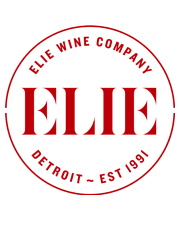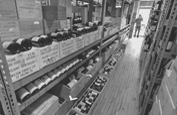Fanfare for the Uncommon Varieties: El Dorado in Galicia’s Ribeiro Region (6-Bottle Wine-Pack $190, All Included)
The northwestern Spanish wine production zone of Ribeiro is undergoing a renaissance. One of the vanguard producers of this movement is the Bodega of Coto de Gomariz located in the Avia valley in the autonomous community of Galicia. A unique microclimate that is influenced by both Atlantic and Continental factors allows the region’s native grapes to fully ripen and develop a floral, aromatic complexity while keeping the mouthwatering freshness that Galician wines are known for.
Galicia is one of the few oceanic climate production zones with a wealth of native grapes used in their wine. These varieties are so well-suited to their unique environment you rarely see them used elsewhere. Indeed, you’re likely never going to see a supermarket sign pointing you to the huge selection of Sousón or Ferrol-based wines. Because of Galicia’s landscape of mountains and sea, the cuisine is broad and diverse. As such, the region’s wines pair well with a myriad of dishes, from fish to fowl to filet.
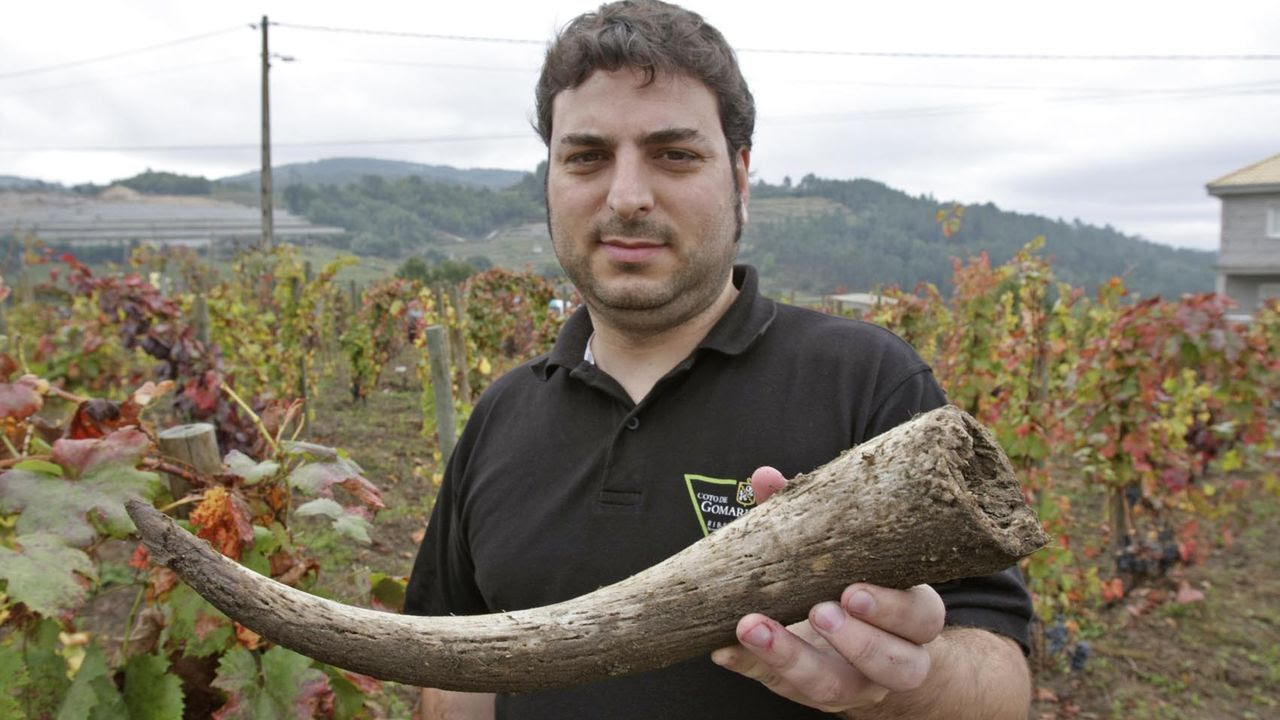 Coto de Gomariz was created in 1978 by the Carreiro family. They began the area’s resurgence by recovering a vineyard that Cistercian monks had established in the 10th century. Today, they own close to 70 acres of vineyards. Coto de Gomariz winemaker Xosé Lois Sebio is one of the most admired and exciting names in Ribeiro. He employs both organic and biodynamic viticulture practices in the vineyards and all wines are fermented with indigenous yeasts.
Coto de Gomariz was created in 1978 by the Carreiro family. They began the area’s resurgence by recovering a vineyard that Cistercian monks had established in the 10th century. Today, they own close to 70 acres of vineyards. Coto de Gomariz winemaker Xosé Lois Sebio is one of the most admired and exciting names in Ribeiro. He employs both organic and biodynamic viticulture practices in the vineyards and all wines are fermented with indigenous yeasts.
Shisteous, granitic, and sandy soils, steep slopes, tiny yields, a unique microclimate, and the farming of the native red and white grapes of the region has allowed Coto de Gomariz to produce some of the most distinctive and expressive wines in Ribeiro.
Included in the Fanfare for the Uncommon Varieties 6-Bottle Package are one each of the following wines:
Price includes a 10% discount plus tax and delivery. We will also honor a 10% discount on any bottles you might wish to add to the package.
Sebio Wish, (Galicia 2016) RED, Regular Price: $43
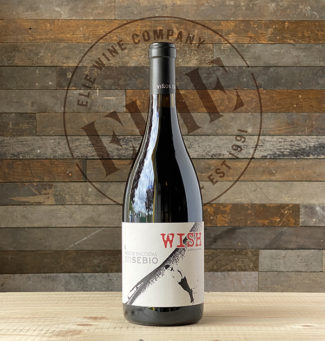 Made only during warm vintages, “Wish” is a tribute to the pioneering post-punk band The Cure, who accompanied Xosé Lois Sebio through his youth. It is also named after the aspiration to make a single wine with fruit from very old strains growing on a plot at the limit of Ribeiro on the steep, terraced Penelas slope oriented to the northwest. This plot is always last to be picked, yet in warm years it produces a wine of fresh, floral, and fruity intensity reminiscent of Côte Rôtie. A blend of 50% Ferrol, 35% Caiño Longo, 10% Sousón, and 5% Bastardo fermented with indigenous yeasts and aged for 14 months in French Oak barrels for a wine with gorgeous aromatics of lilac, high-toned fruit, and distinct minerality. Only 94 cases produced.
Made only during warm vintages, “Wish” is a tribute to the pioneering post-punk band The Cure, who accompanied Xosé Lois Sebio through his youth. It is also named after the aspiration to make a single wine with fruit from very old strains growing on a plot at the limit of Ribeiro on the steep, terraced Penelas slope oriented to the northwest. This plot is always last to be picked, yet in warm years it produces a wine of fresh, floral, and fruity intensity reminiscent of Côte Rôtie. A blend of 50% Ferrol, 35% Caiño Longo, 10% Sousón, and 5% Bastardo fermented with indigenous yeasts and aged for 14 months in French Oak barrels for a wine with gorgeous aromatics of lilac, high-toned fruit, and distinct minerality. Only 94 cases produced.
VX Cuvee Caco (Ribeiro 2015) RED, Regular Price: $41
 VX or “experimental wine” was the name written on the first barrels aged at Coto de Gomariz, and Caco is the nick-name of Ricardo Carreiro´s father. It is a blend of 50% Sousón, 30% Caiño Longo and Caiño da Terra, 15% Carabuñeira, and 5% Mencía from the “A Ferreira” estate vineyard re-planted with local varietals in 1994. Fermented with native yeasts and aged for 20 months in new French 500 liter oak barrels. Fragrant spiced dark berries and licorice on the nose precedes a sip that offers depth and focus with a hint of vanilla and framed by supple tannins. Only 208 cases produced.
VX or “experimental wine” was the name written on the first barrels aged at Coto de Gomariz, and Caco is the nick-name of Ricardo Carreiro´s father. It is a blend of 50% Sousón, 30% Caiño Longo and Caiño da Terra, 15% Carabuñeira, and 5% Mencía from the “A Ferreira” estate vineyard re-planted with local varietals in 1994. Fermented with native yeasts and aged for 20 months in new French 500 liter oak barrels. Fragrant spiced dark berries and licorice on the nose precedes a sip that offers depth and focus with a hint of vanilla and framed by supple tannins. Only 208 cases produced.
Abadía de Coto de Gomariz (Ribeiro 2017) RED, Regular Price: $28
 Abadía de Gomariz is a blend of 50% Sousón, 25% Brancellao, 20% Ferrol, and 5% Mencía from the village of Gomariz where soils are granitic with schist and clay. Though fermented in stainless steel, the wine is aged for one year in 500-liter used oak barrels, mostly of French origin, to tame some of the hairy tannins that Sousón can exhibit. A sip is juicy little forest berries with a long and winding cherry pit finish. On the nose, the berry fruit is sweeter with hints of licorice and cream. On the label is the coat of arms of the Abbey Gomariz — the oldest civil building for winemaking in the Iberian Peninsula. Only 1,600 cases produced.
Abadía de Gomariz is a blend of 50% Sousón, 25% Brancellao, 20% Ferrol, and 5% Mencía from the village of Gomariz where soils are granitic with schist and clay. Though fermented in stainless steel, the wine is aged for one year in 500-liter used oak barrels, mostly of French origin, to tame some of the hairy tannins that Sousón can exhibit. A sip is juicy little forest berries with a long and winding cherry pit finish. On the nose, the berry fruit is sweeter with hints of licorice and cream. On the label is the coat of arms of the Abbey Gomariz — the oldest civil building for winemaking in the Iberian Peninsula. Only 1,600 cases produced.
“The Flower and the Bee” (Ribeiro 2018) RED, Regular Price: $20
 This miniscule production everyday red comes from younger Gomariz vineyards planted with the native variety Sousón in mostly granitic soils. Fermented with native yeasts and aged for 4 months in barrel, this wine is the entry level of Gomariz, yet expresses the same identity of the Avia Valley terroirs as its more ambitious siblings. It’s a versatile wine full of ripe dark berry aromas with a pinch of herbs and spice and a bright finish. The lively label represents both the origin of vine fertilization, as well as the estate’s respect for nature. Only 1,250 cases produced.
This miniscule production everyday red comes from younger Gomariz vineyards planted with the native variety Sousón in mostly granitic soils. Fermented with native yeasts and aged for 4 months in barrel, this wine is the entry level of Gomariz, yet expresses the same identity of the Avia Valley terroirs as its more ambitious siblings. It’s a versatile wine full of ripe dark berry aromas with a pinch of herbs and spice and a bright finish. The lively label represents both the origin of vine fertilization, as well as the estate’s respect for nature. Only 1,250 cases produced.
Finca O Figueiral (Ribeiro 2017) WHITE, Regular Price: $37
 70% Treixadura, 10% Godello, 10% Lado, 5% Loureira, and 5% Albariño from the single estate vineyard “O Figueiral” in Gomariz grafted with local grape varieties in 1978. The terroir is mostly clay with a subsoil of schist. Free-run juice begins fermentation in stainless steel vats and finishes in new 500 liter French Oak barrels. It is then aged over fine-lees for 10 months with periodic battonage to build body while maintaining balance. Melon, peach, and tangerine aromas with floral overtones precede a stony and precise, lush yet lively wine. Only 275 cases produced.
70% Treixadura, 10% Godello, 10% Lado, 5% Loureira, and 5% Albariño from the single estate vineyard “O Figueiral” in Gomariz grafted with local grape varieties in 1978. The terroir is mostly clay with a subsoil of schist. Free-run juice begins fermentation in stainless steel vats and finishes in new 500 liter French Oak barrels. It is then aged over fine-lees for 10 months with periodic battonage to build body while maintaining balance. Melon, peach, and tangerine aromas with floral overtones precede a stony and precise, lush yet lively wine. Only 275 cases produced.
“X” (Ribeiro 2019) WHITE, Regular Price: $30
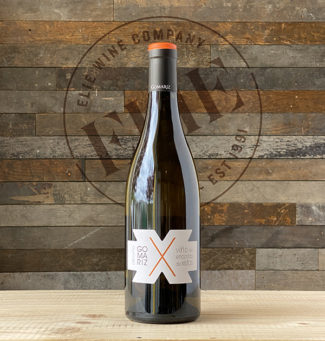 “X” is a blend of 95% Albariño and 5% Treixadura named after the schist soils (xisto in Gallego) where the grapes are grown. This single vineyard wine comes from fruit grown in the “As Penelas” plot. Free-run juice is fermented with native yeasts and then aged in stainless steel vats. Aromas of yellow fruit and honey with a touch of lemon pith precede a fleshy mid-palate, offering vibrant citrus and orchard fruit flavors braced by juicy acidity and a finish of nervy minerality. This is the kind of white wine that will please just about everyone. Only 400 cases produced.
“X” is a blend of 95% Albariño and 5% Treixadura named after the schist soils (xisto in Gallego) where the grapes are grown. This single vineyard wine comes from fruit grown in the “As Penelas” plot. Free-run juice is fermented with native yeasts and then aged in stainless steel vats. Aromas of yellow fruit and honey with a touch of lemon pith precede a fleshy mid-palate, offering vibrant citrus and orchard fruit flavors braced by juicy acidity and a finish of nervy minerality. This is the kind of white wine that will please just about everyone. Only 400 cases produced.
- - -
Posted on 2021.02.10 in Spain DO, Wine-Aid Packages, Ribeiro | Read more...
Merlot Glory: The Bounty of Bordeaux’s Backcountry (6-Bottle Pack for $195, or 12-Bottle Pack for $365, All Included)
A grape variety born in Bordeaux, Merlot often gets a bad rap due to the glut of simple, fruity wines that bear its name lined up on party store shelves. But when the soils and climate are ideal, and production is focused on quality, the variety is capable of making some of the most expressive wines in the world. Situated on the north side of the Dordogne River near the city of Libourne, 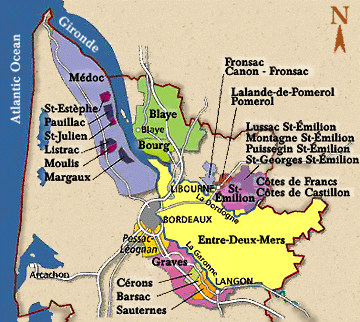 the soils of mainly clay and limestone that cover the “Right Bank” Bordeaux appellations of Pomerol and Saint Émilion are capable of producing wines that reveal the complete range of the Merlot variety and are the reference points for the rest of the world.
the soils of mainly clay and limestone that cover the “Right Bank” Bordeaux appellations of Pomerol and Saint Émilion are capable of producing wines that reveal the complete range of the Merlot variety and are the reference points for the rest of the world.
While many of the wines of Pomerol and Saint Émilion are out of reach for the typical consumer, the entire area known as the Right Bank offers excellent quality and value through the important satellite appellations surrounding them. These often overlooked appellations produce wines with similar characteristics as the big two, with many of the top producer’s efforts surpassing expectations. We’re pleased to offer this boxful of wines illustrating the sublime characteristics of Merlot from its birthplace terroir.
Included in Merlot Glory: The Bounty of Bordeaux’s Backcountry 6-Bottle Package are one each of the following wines, two bottles of each wine (and a deeper discount) will be included in the 12-bottle package:
The discounted price includes tax and delivery. We will also honor a 10% discount on any bottles you might wish to add to the package.
 Lalande de Pomerol
Lalande de Pomerol
Lalande de Pomerol produces reds that, at their best, mimic Pomerol’s robust, earthy flavors at a fraction of the price. While there is more variation in terroir within the two appellations than between them, Lalande tends to have more gravel and sand compared to Pomerol’s heavier clay soils. Château Les Cruzelles 2016 (Regular $45) is an ample wine from perfectionist proprietor Denis Durantou, who is known for his celebrated Pomerol estate Château l’Eglise Clinet that is less than a mile away. A blend of 60% Merlot and 40% Cabernet Franc, it’s a hearty wine full of black raspberries, dark and juicy plums, and hints of cocoa and floral accents.
 Castillon – Côtes de Bordeaux
Castillon – Côtes de Bordeaux
Next-door neighbor Saint-Émilion has had a huge influence on Castillon. Saint-Émilion growers and chateau owners have taken advantage of lower-vineyard prices in Castillion to produce serious Saint-Émilion-style wines for a fraction of Saint-Émilion prices. Another beautiful bottle from star winemaker Denis Durantou of Château l’Eglise Clinet is Château Montlandrie 2016 (Regular $42). A blend of 65% Merlot, 20% Cabernet Franc, and 15% Cabernet Sauvignon, from terroir of clay and limestone soils on the plateau of Cotes de Castillon. Fresh herbs, dark cherry and floral notes precede cherry liqueur, licorice, and spice that meld well with its ripe, elegant style.
 Francs – Côtes de Bordeaux
Francs – Côtes de Bordeaux
Closer to Bergerac than the city of Bordeaux, Francs is a small jewel located next to Castillon. It is the smallest and most rural region at a little over 1,000 acres. 100% Merlot, Château Marsau 2016 (Regular $35) comes from vineyards with a terroir of clay, limestone and sandy soils. The vineyard is well situated on a slope that is close to the peak of the appellation’s plateau with an elevation of over 300 feet. The vines are on average 35 years of age. The wines are aged in 30% new, French oak barrels for 12 months before bottling to produce a wine of depth, tannin, roundness and plenty of ripe, smoky black cherries and plummy fruit from start to finish.
 Fronsac
Fronsac
The appellation of Fronsac is another of Bordeaux’s lesser known winemaking regions. It is an area of back-country roads and tiny vineyards a stone’s throw from Pomerol and Saint-Émilion. Indeed, Fronsac is five times smaller than Saint-Émilion, with a more homogenous terroir of limestone and clay — “Fronsac molasses” it’s sometimes called by the grape farmers that toil its vineyards. In the right hands, wines made in Fronsac can be as good as many of the wines from its big-name neighbors. Château Clos du Roy 2018 (Regular $25) is one of them. 90% Merlot, 5% Cabernet Franc, and 5% Cabernet Sauvignon aged in 30% new, French oak barrels for 12 months produce a balanced wine full of fresh fruit, juicy acidity, and muscular tannin.
 Montagne Saint-Émilion
Montagne Saint-Émilion
Montagne-Saint-Émilion is the largest of the Saint Émilion satellite villages, and many consider it the best. It is also the location of one of France’s top viticultural research colleges. Clos de Boüard is the newest project for Coralie de Boüard, owner of La Fleur de Boüard in the Lalande de Pomerol appellation, and daughter of Hubert de Boüard of the famous Château Angelus. The estate’s vines are an average of 35 years old. They also have very old vines that range from 60 to 70 years of age. Château Clos de Boüard “Dame de Boüard” 2018 (Regular $24) is the second wine of Clos de Boüard and a blend of 60% Merlot, 30% Cabernet Franc, and 10% Cabernet Sauvignon. Fresh, bright fruits, chocolate and licorice work together perfectly in this forward, open, and easy to drink wine.
 Blaye – Côtes de Bordeaux
Blaye – Côtes de Bordeaux
Blaye was an important river port in Roman times, and today, the Citadel of Blaye is a UNESCO World Heritage Site. It is a source of lovely and accessible red wines, driven by fresh fruit. Biodynamically cultivated since 2008 by nature-loving winemaker, Bruno Martin, Château Roland La Garde “Tradition” 2016 (Regular $23) is a blend of 80% Merlot and 20% Cabernet Sauvignon from vines 20 years old grown in clay and limestone soils. Two-thirds of the wine ages in barrels while one-third ages in vat for 12 months. It is a wine with finesse and harmony, good balance, and a tannic structure that highlight the aromas of red fruits.
- - -
Posted on 2021.02.03 in France, Bordeaux, Wine-Aid Packages | Read more...
Trailblazing Dolomites Winemaker Elisabetta Foradori’s Magic with Indigenous Varieties (6-Bottle Wine-Pack $295, All Included)
Elisabetta Foradori took over her family’s estate in 1984 at the tender age of 20 after her father’s sudden death. Since then, she has made elevating the native Teroldego grape — an ancient variety that thrives in the high, sunny foothills and plateaus of the Campo Rotaliano below the Dolomite peaks — her life’s work.
Over the years she has taken huge steps to perfect the operation. It began with rigorous pruning, harvesting by hand, and replacing nursery clones with massale cuttings from the oldest, best Foradori vines. On the recommendation of her friend, the Alsatian winemaker Marc Kreydenweiss, Elisabetta began the conversion to biodynamic farming practices in 2000. By 2002 the entire domaine was being run biodynamically and full Demeter certification was achieved in 2009.
This dedication over the last 30 years to restore Teroldego’s genetic diversity so that the wines would be deeper, purer, and more complex has resulted in Foradori becoming recognized as the top producer in the region.
 While Elisabetta is still very much active at the winery, passing down her painstaking attention to detail and stubborn expertise while collaborating to make the most recent wines, today, it is her three children, Emilio, Theo, and Myrtha, who are evolving the winery in new directions.
While Elisabetta is still very much active at the winery, passing down her painstaking attention to detail and stubborn expertise while collaborating to make the most recent wines, today, it is her three children, Emilio, Theo, and Myrtha, who are evolving the winery in new directions.
After many years in the cellar with Elisabetta, her eldest son, Emilio, has headed the viticulture side of the estate for a few years now. If there were any noticeable change to the wines under Emilio it would be a slight shift toward more floral aromatics and a softer palate. Theo oversees the winery’s business and commerce from his home in Naples. Market gardener Myrtha takes care of Foradori’s farming and gradual expansion, including vegetable farming and the breeding of Tyrolean Grey cattle for cheese production.
The Foradori estate consists of close to 60 acres of vines, of which 75% are Teroldego. The vineyards are high in altitude and surrounded by mountains yet receive plenty of sunlight to ensure ripeness. The combination of unwavering attention to the vines and natural vinification has created a vibrant and elegant style of Teroldego that is as remarkable as the place that it calls home.
Included in Trailblazing Dolomites Winemaker Elisabetta Foradori’s Magic with Indigenous Varieties 6-Bottle Package are one each of the following wines:
The price includes tax and delivery, as well as a 12% discount. We will also honor a 10% discount on any bottles you might wish to add to the Wine-Aid package.
 “Granato” Teroldego (Vigneti delle Dolomiti 2018) RED, Regular Price: $79
“Granato” Teroldego (Vigneti delle Dolomiti 2018) RED, Regular Price: $79
No other cuvée illustrates the brilliance of Foradori wines better than “Granato.” It is the flagship wine of the domaine that matures for 15 months in barrel. The Italian word for pomegranate, “Granato” is inspired by the charm, beauty, and intensity of its namesake Mediterranean fruit. The wine is beautifully rich and polished without pretense, and perfectly balanced by a gentle vein of minerality. The blend is harvested from the stony alluvial soils of three different vineyards of the Campo Rotaliano, with faithful adherence to biodynamic principles before fermentation in large, open-top oak casks for a truly unique and world-class wine. There are only about 1,600 cases of “Granato” produced each year.
 “Morei” Teroldego (Vigneti delle Dolomiti 2019) RED, Regular Price: $56
“Morei” Teroldego (Vigneti delle Dolomiti 2019) RED, Regular Price: $56
“Morei” comes from a six acre parcel of limestone and granite rich soils of the Campo Rotaliano plateau. The vines average 30 years old. The wine spends eight months on its skins in clay amphorae (tinajas from Villarrobledo, Spain), untouched until blending. It is then rested in cement before bottling. “Morei” means dark in the dialect of Trentino and the grapes from this vineyard reflect this. Their roots plunge deep in the stones and sand of the soil carried by the river Noce giving rise to a sappy wine. Tart, chewy berries, blood orange, and heady floral scents ride a spine of juicy luxury in this captivating wine. About 1,000 cases produced.
 “Sgarzon” Teroldego (Vigneti delle Dolomiti 2019) RED, Regular Price: $56
“Sgarzon” Teroldego (Vigneti delle Dolomiti 2019) RED, Regular Price: $56
Sgarzo means vine shoot in the Campo Rotaliano. Like “Morei” the “Sgarzon” spends 8 months on its skins in clay amphorae. The vines that grow in the “Sgarzon” vineyard benefit from the cooler climate and the sandier soil that distinguishes the parcel, resulting in a more delicate wine than that produced from the stonier-soiled Morei vineyard. Currants, cranberries, spice, and moist earth highlight this elegant and energetic elixir. About 1,000 cases produced.
 Teroldego (Vigneti delle Dolomiti 2018) RED, Regular Price: $32
Teroldego (Vigneti delle Dolomiti 2018) RED, Regular Price: $32
The Campo Rotaliano is a well-demarcated geographical area, a flood plain formed by the Adige and Noce rivers recessed between the Dolomites. This entry-level wine of Foradori is from mostly sandier parcels of vines planted from 1956 to 2005 totaling around 25 acres and meant to express the alluvial soils of Campo Rotaliano. Some of the vines are still pergola-trained, while newer plantings are on wires in the Guyot style. Fermented in cement – with up to 20% whole-cluster depending on the vintage – and aged for one year in cement and wooden foudres. About 4,000 cases produced.
 “Fuoripista” Pinot Grigio (Vigneti delle Dolomiti 2019) WHITE, Regular Price: $56
“Fuoripista” Pinot Grigio (Vigneti delle Dolomiti 2019) WHITE, Regular Price: $56
Forget what you know about Pinot Grigio. This is no lightweight guzzler meant to be consumed ice cold. The cuvée “Fuoripista” is at its best around the same temperature you would drink a light red wine. The wine is the result of a cooperative venture between Foradori and another biodynamic winegrower of the Campo Rotaliano, Marco Devigili. It spends more than eight months in clay amphorae in contact with the pink-hued Pinot Grigio skins for a wine that exudes heady aromas of dried flowers and melon. Don’t let its light blush of pink fool you; this is an intensely flavored wine. About 800 cases produced.
 “Fontanasanta” Manzoni Bianco (Vigneti delle Dolomiti 2019) WHITE, Regular Price: $37
“Fontanasanta” Manzoni Bianco (Vigneti delle Dolomiti 2019) WHITE, Regular Price: $37
Manzoni Bianco is a cross between Riesling and Pinot Blanc. The grapes are sourced from about 12 acres of vineyards on the calcareous clay soils of the Fontanasanta hills above Trento. The wine sees one week of maceration on the skins in cement tanks and one year of aging in acacia wood. The result is a full-bodied white, reminiscent of Burgundy, bursting with citrus and orchard fruit yet with a focused and mineral finish with hints of saline. While gracious young, it is a wine that really comes into its own at least three years after harvest. About 2,000 cases produced.
- - -
Posted on 2021.01.27 in Wine-Aid Packages, Italy, Trentino Alto Adige | Read more...
The Talented Marcel Richaud’s Old Hand at Southern Rhône’s Newest Appellation: Cairanne (9-Bottle Wine-Pack $260, All Included)
The Rhône River stretches from the Alps to the Mediterranean through an incredibly diverse expanse. At its southern end, between the cities of Vienne and Avignon, rolling hills meet plateaus of varying elevation under the toasty Mediterranean sun. Long, warm summers and mild winters allow the region’s dominant grape variety, Grenache, to yield good concentration via stony soils and low rainfall. While Châteauneuf-du-Pape is the most recognizable of the region’s nine cru appellations, it is Cairanne (elevated to cru status in 2016), that is perhaps the most promising and exciting, often producing wines that express a distinct finesse.
To think of the wines of Cairanne is to think of Marcel Richaud, who was instrumental in elevating the region to cru status. Marcel comes from a vine growing family that focused their energies on producing and selling fruit to the local cooperative. While still in his teens he decided to break from that tradition to forge his own path as a vigneron, producing his first vintage at the age of 19. He soon made a name for himself across the region, into the Paris wine scene, and then internationally.
As with most renowned winemakers, concentrating on making wine in the vineyard first was one of the keys to his success. Organic methods were used from the very beginning and cellar work is performed with the goal of expressing the region’s terroir with purity. Most of the varieties are vinified apart in cement vats with indigenous yeasts and no addition of sulfites, save for a small amount at bottling.
Over the years, Marcel has grown the estate by recouping family vineyards from the cooperative and purchasing land. Today, he is retired, and the nearly 200 acre estate is run by his children: Thomas, Claire, and Edith. But even though Marcel has stepped back from daily operations, his influence is still clearly tasted in every sip of the wines that bear his name.

Included in The Talented Marcel Richaud’s Old Hand at Southern Rhône’s Newest Appellation 9-Bottle Package are three each of the following wines:
The price includes tax and delivery, as well as a 10% discount. We will also honor a 10% discount on any bottles you might wish to add to the Wine-Aid package.
 Cairanne (2018) Regular Price: $37
Cairanne (2018) Regular Price: $37
The village of Cairanne is situated atop a range of low hills with ideal exposure. It’s elevation ensures slightly cooler temperatures than much of the region and lends a brightness and delicacy to the wine. This organically certified cuvée aims to express the village’s terroir from soils of poor, stony clay-limestone on mid-slope plots. A blend of Grenache, Syrah, Mourvèdre, and Carignan from 40 to 70-year-old vines, the wine is fermented and aged primarily in concrete tanks, with a portion in oak barrels, then bottled unfined and unfiltered with only a small amount of sulfites. The result is a wine that is both rich and electric, with complex aromas of fruit (both fresh and preserved) and herbal spice. A sip fills the mouth with ripe berries and licorice riding a mineral spine.
 “Terre de Galet” (Côtes du Rhône 2018) Regular Price: $32
“Terre de Galet” (Côtes du Rhône 2018) Regular Price: $32
A certified organic blend of 40% Grenache, 30% Syrah, 15% Carignan, 10% Mouvèdre, and 5% Counoise, “Terre de Galets” comes from a mix of plots and vines 10 to 40 years old growing in a mixture of red clay and the region’s famous round stones (galets roulés). The vineyards are located on the Plan de Dieu, some of the most significant terroir in Côtes du Rhône. Post-harvest, all the fruit is destemmed, with the exception of the Carignan which is fermented whole-cluster. The wine then ages in concrete vats for six months in an underground cellar. Bottled unfined and unfiltered with only a small amount of sulfites, it is energetic, well-structured, with loads of ripe fruit and spice.
 “à la source” (Vin de France Rouge 2019) Regular Price: $23
“à la source” (Vin de France Rouge 2019) Regular Price: $23
A certified organic and poundable blend of Grenache, Syrah, Carignan, and Mourvèdre from the estate’s youngest vines and newest plantations located near Cairanne, on the terroirs of Combes, Granges, and Sousville. Each variety is vinified separately in concrete vats and the wine is bottled unfined and unfiltered with only a small amount of sulfites. A smooth and easy-drinking wine that emphasizes the fruit yet has enough complexity to pair with a charcuterie plate but might even be better with a garlicky “white” pizza from nearby Tomatoes Apizza. Serve with a slight chill.
- - -
Posted on 2021.01.20 in France, Wine-Aid Packages, Southern Rhone | Read more...
The Champagne Society February 2021 Selection: Champagne Francis Boulard & Fille
Champagne Francis Boulard & Fille “Rosé de Saignée” (2013, Rosé Extra Brut)
Price for The Champagne Society members: $76, SOLD OUT
Francis Boulard‘s career as a vigneron dates back to the early 70’s. He worked alongside his brother and sister running the now defunct family estate Raymond Boulard. But a fundamental disagreement would lead him to leave it all behind and start his own much smaller estate.
Disturbed by the use of chemical fertilizers, pesticides, and fungicides being used in the vineyards, Francis dove into Rudolph Steiner’s biodynamic philosophies. Francis convinced his siblings to convert a couple of acres of vines to biodynamic viticulture, at first to see if it was possible to have healthy vines without using chemicals. Finding success in the vineyard, he then began experimenting with separate vinifications, eventually believing wine from the biodynamic grapes was more expressive.
Francis proposed converting the entire estate to his brother and sister and was summarily rejected. So he decided to claim seven acres (his portion of the family’s vines) and broke off to start his own estate in 2009 with his daughter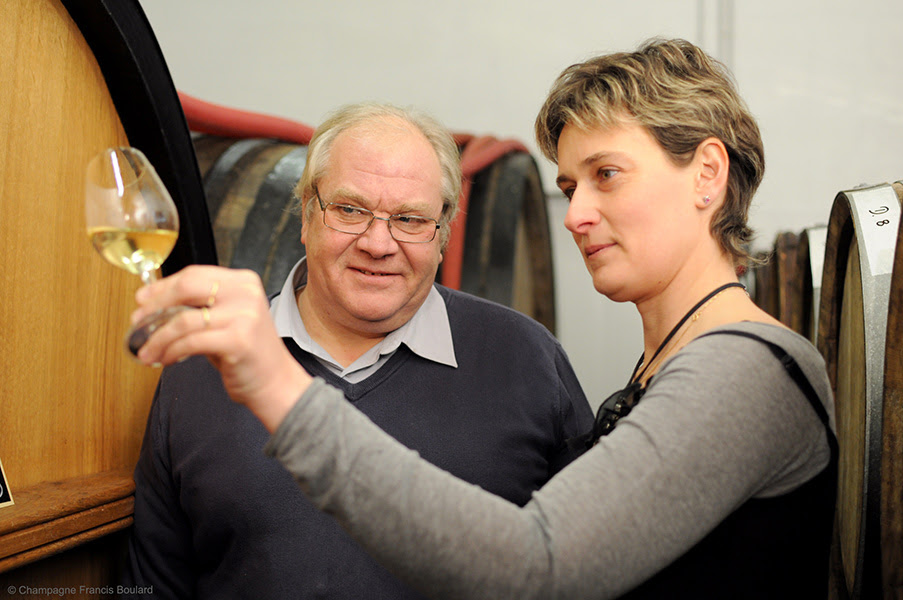 Delphine, who had been working alongside him at Raymond Boulard for nine years.
Delphine, who had been working alongside him at Raymond Boulard for nine years.
Delphine Boulard is the seventh generation to work her family’s land and is now fully at the helm of the estate. There are three distinct terroirs: 4 acres are in the Massif Saint-Thierry, 1.2 acres in Mailly (both sectors of the Montagne de Reims) and the 3 acres of historic family parcels in the Vallée de la Marne. The estate is certified organic and also worked using biodynamic methods. Parcels are vinified separately in old oak casks of different sizes utilizing indigenous yeast.
 There are two main methods of creating pink champagne. Blended pink champagne (Rosé d’assemblage) is by far the most widespread, as it allows the producer to obtain color and density that is identical from year to year. It consists of blending a still white wine (before its second fermentation in bottle) with 5-20% of Champagne red wine, vinified to be non-tannic. Macerated Pink champagne (Rosé de saignée) consists of allowing the grape must to remain in contact with the skins for a short while (just a few hours). Thus the natural pigments in the skins of the black grapes begin to color the juice and at the same time they enrich the juice with their aromatic components. After maceration, the juices are bled off – hence the name. “Bled” pink champagnes generally have a more intense pink robe and are usually richer in taste with a vinous character that makes them particularly suitable to be served with food.
There are two main methods of creating pink champagne. Blended pink champagne (Rosé d’assemblage) is by far the most widespread, as it allows the producer to obtain color and density that is identical from year to year. It consists of blending a still white wine (before its second fermentation in bottle) with 5-20% of Champagne red wine, vinified to be non-tannic. Macerated Pink champagne (Rosé de saignée) consists of allowing the grape must to remain in contact with the skins for a short while (just a few hours). Thus the natural pigments in the skins of the black grapes begin to color the juice and at the same time they enrich the juice with their aromatic components. After maceration, the juices are bled off – hence the name. “Bled” pink champagnes generally have a more intense pink robe and are usually richer in taste with a vinous character that makes them particularly suitable to be served with food.
“Rosé de Saignée” comes from the clay and limestone terroirs of Vallée de la Marne and Massif Saint-Thierry. It is composed of 50% Pinot Noir and 50% Pinot Meunier. The bleeding off is carried out when the scents of red fruits are adequately extracted, well integrated, and in balance with the must. Bright red fruit, mint, chalk and white flowers are all beautifully lifted in a finely cut, sculpted Champagne that dazzles with its energy and tension. Disgorged on January 7, 2020. Only 2 grams/liter dosage.
- - -
Posted on 2021.01.18 in France, The Champagne Society, Champagne | Read more...
Featured Wines
- Notebook: A’Boudt Town
- Saturday Sips Wines
- Saturday Sips Review Club
- The Champagne Society
- Wine-Aid Packages
Wine Regions
Grape Varieties
Aglianico, Albarino, Albarín Tinto, Alicante Bouschet, Aligote, Altesse, Arbanne, Arcos, Auxerrois, Barbarossa, Beaune, Biancu Gentile, Bonarda, bourboulenc, Cabernet Sauvignon, Calvi, Carcajolu-Neru, Chenin Blanc, Cinsault, Clairette, Cortese, Corvinone, Cot, Counoise, Dolcetto, Erbamat, Fiano, folle Blanche, Fumin, Gamay, Garganega, Garnacha Tintorera, Godello, Graciano, Grenache, Grenache Blanc, Grolleau, Groppello, Jacquère, Juan Garcia, Lladoner Pelut, Macabeo, Maconnais, Malbec, Malvasia, manseng, Marcelan, Marsanne, Marselan, Marzemino, Melon de Bourgogne, Mencía, Merlot, Montepulciano, Montònega, Moscatell, Mourv, Mourvèdre, Muscadelle, Muscat, Natural, Nebbiolo, Nero d'Avola, Niellucciu, Palomino, Parellada, Patrimonio, Pecorino, Pedro Ximénez, Persan, Petit Meslier, Pineau d'Aunis, Pinot Auxerrois, Pinot Blanc, Pinot Gris, Pinot Meunier, Pinot Noir, Pouilly Fuisse, Pouilly Loche, Riesling, Rousanne, Sagrantino, Sangiovese, Sauvignon, Sciacarellu, Semillon, Serine, Sumoll, Tempranillo, Teroldego, Timorasso, Trebbiano Valtenesi, Treixadura, trepat, Trousseau, Ugni Blanc, Vermentino, Viognier, Viura, Xarel-loWines & Events by Date
- September 2025
- August 2025
- July 2025
- June 2025
- May 2025
- April 2025
- March 2025
- February 2025
- January 2025
- December 2024
- November 2024
- October 2024
- September 2024
- August 2024
- July 2024
- June 2024
- May 2024
- April 2024
- March 2024
- February 2024
- January 2024
- December 2023
- November 2023
- October 2023
- September 2023
- August 2023
- July 2023
- June 2023
- May 2023
- April 2023
- March 2023
- February 2023
- January 2023
- December 2022
- November 2022
- October 2022
- September 2022
- August 2022
- July 2022
- June 2022
- May 2022
- April 2022
- March 2022
- February 2022
- January 2022
- December 2021
- November 2021
- October 2021
- September 2021
- August 2021
- July 2021
- June 2021
- May 2021
- April 2021
- March 2021
- February 2021
- January 2021
- December 2020
- November 2020
- October 2020
- September 2020
- August 2020
- July 2020
- June 2020
- May 2020
- April 2020
- March 2020
- February 2020
- January 2020
- December 2019
- November 2019
- October 2019
- September 2019
- August 2019
- July 2019
- June 2019
- May 2019
- April 2019
- March 2019
- February 2019
- January 2019
- December 2018
- November 2018
- October 2018
- September 2018
- August 2018
- July 2018
- June 2018
- May 2018
- April 2018
- March 2018
- February 2018
- January 2018
- December 2017
- November 2017
- October 2017
- September 2017
- August 2017
- July 2017
- June 2017
- May 2017
- April 2017
- March 2017
- February 2017
- January 2017
- December 2016
- November 2016
- October 2016
- September 2016
- August 2016
- July 2016
- June 2016
- May 2016
- April 2016
- March 2016
- February 2016
- January 2016
- December 2015
- November 2015
- October 2015
- September 2015
- August 2015
- July 2015
- June 2015
- May 2015
- April 2015
- March 2015
- February 2015
- January 2015
- December 2014
- November 2014
- October 2014
- September 2014
- August 2014
- July 2014
- June 2014
- April 2014
- March 2014
- February 2014
- January 2014
- December 2013
- November 2013
- October 2013
- September 2013
- August 2013
- July 2013
- June 2013
- May 2013
- April 2013
- March 2013
- February 2013
- January 2013
- December 2012
- November 2012
- October 2012

